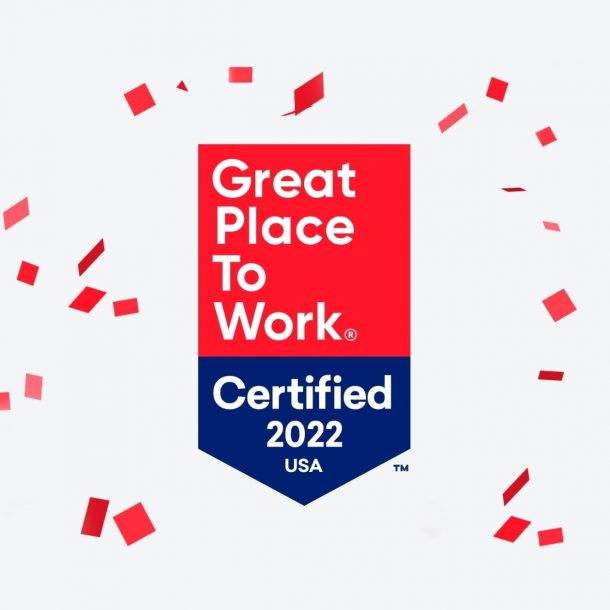
Things to Know: Reverse Mortgages
What You Should Know About Reverse Mortgage Loans
For homeowners aged 62 years and older, who have paid off their home or only have a small mortgage, a reverse mortgage loan could be used as a powerful retirement tool. A reverse mortgage loan essentially allows you to borrow against the equity you’ve built up in your home. By doing so, you can supplement your income and remain in your current home. Reverse mortgage loans can be used as a financial tool in retirement — especially as more older homeowners age in place, but there are a few things you need to know.
What is a reverse mortgage?
Reverse mortgages are government-insured loans that allow homeowners 62 years and over, to access the equity in their homes and use it as tax-free cash to use. The main benefit of a reverse mortgage is that borrowers can age in place until the loan matures, and as long as they comply with all loan terms. Some of the benefits of a reverse mortgage include the following:
- No monthly payments
- A non-recourse loan that is federally insured
- Unaffected Social Security and Medicare benefits
For many people, a reverse mortgage can serve as a powerful retirement financial planning tool to help alleviate a challenging financial situation. Get in touch with one of our local experts about a reverse mortgage loan here.
How does a reverse mortgage work?
To qualify for a reverse mortgage, you must be at least 62 years of age and own a home. If you have equity in your house and are looking for additional cash flow, a reverse mortgage loan could provide the funding you need while allowing you to age in place. If you decide to take out a reverse mortgage, there are several ways you can receive funds from the loan. You might opt for a lump sum, a line of credit, a monthly payment, or a combination of these types of payments.
In general, reverse mortgages are known as nonrecourse loans. This means that if you take out this type of mortgage, you won’t be responsible for paying the lending institution more than the value of the home. Many seniors prefer to stay in their homes, which is why a reverse mortgage could serve as an ideal solution. You may stay in the house you love while enjoying an additional revenue stream to cover retirement expenses, as long as the borrower continues to pay the taxes and insurance on the home, maintain the property, and comply with the other loan terms.
What are the types of reverse mortgages?
Home Equity Conversion Mortgage (HECM): The most popular type of reverse mortgage, The Home Equity Conversion Mortgage (HECM) is Federal Housing Administration’s (FHA) reverse mortgage program which enables you to withdraw some of the equity in your home. You choose how you want to withdraw your funds, whether in a fixed monthly amount or a line of credit or a combination of both. You can also use a HECM to purchase a primary residence if you are able to use cash on hand to pay the difference between the HECM proceeds and the sales price plus closing costs for the property you are purchasing.
Proprietary reverse mortgage: A proprietary reverse mortgage is a loan that allows senior homeowners to access the equity in their homes through a private lender. They are not as tightly-regulated as home equity conversion mortgages (HECM) and are not federally-insured.
Proprietary reverse mortgages are sometimes called jumbo reverse mortgages because they are sought mostly by people who want access to more money than the federally-insured reverse mortgage can supply, and whose homes are valued at more than the limit set by the government. Proprietary reverse mortgages make up only a small segment of the market for reverse mortgages, and most of their customers are the owners of homes valued above the limit set by the Federal Housing Administration (FHA). For 2020, that limit is set at $765,000.
Single-purpose reverse mortgage: Single-purpose reverse mortgages allow homeowners aged 62 or older to borrow against their home equity to fund a single, lender-approved purpose, such as paying property taxes or performing maintenance on the home. Typically, this is the least expensive type of reverse mortgage to take out, largely because it’s backed by government agencies and non-profit organizations.
The most important thing to remember about a single-purpose reverse mortgage is included in its name. You can only use your proceeds for one thing – and it must be approved by your lender. This is one of the biggest differences between this type of reverse mortgage and the home equity conversion mortgage (HECM) and proprietary reverse mortgage, which both allow you to use your proceeds however you like.
What are the pros and cons of a reverse mortgage?
No two retirements are the same, which is why a reverse mortgage may be ideal for some and not as advantageous for others. As you continue to explore your retirement options, add this list of reverse mortgage pros and cons for homeowners to assist you in deciding whether a reverse mortgage can help you achieve a better retirement. Here are the some of the benefits of a reverse mortgage:
Pros:
- Helps secure your retirement
- Allows qualified homeowners to age in place
- You select how you wish to receive funds
- Reverse mortgages are non-recourse loans
Cons:
- A home with a reverse mortgage could go into default
- You have to live in the home as your primary residence
- You’re drawing down your equity
- You may leave less for your heirs
Is a reverse mortgage right for me?
A reverse mortgage can be a powerful retirement tool but may not be right for everyone’s financial situation. There are a few factors that can make a reverse mortgage worth it:
Your home’s value is increasing: If you’re building up a lot of equity in your home, you may be able to take out a reverse mortgage and still have money left over for your estate.
You plan to age in place: Just like a regular mortgage, there are significant upfront costs associated with the loan. You’ll want to be sure you plan to live in that home long enough to make those costs worth it.
You can maintain the costs of your home: Since staying current on property taxes, insurance, maintenance, etc. is required to keep your reverse mortgage current, it’s important that you have plenty of cash flow for these expenses.
A reverse mortgage loan isn’t for everyone, but if you own your home and want to capitalize on that ownership in your later years, it can offer you benefits. If you are short on financial resources, have no family members interested in inheriting your home and no desire to leave your home, a reverse mortgage could fit well for your situation.
Final Thoughts
A reverse mortgage is a powerful financial tool that helps older homeowners supplement their income in retirement or pay for home renovations or other expenses like healthcare costs. Note, there are eligibility requirements that specify who can take advantage of this kind of loan, how much money can be received and what the homeowner has to do to remain in good standing.
At BluPrint, we’re here to help you find the best loan options for your situation. We pride ourselves in our transparency, experience, local expertise, and out-of-the-box solutions that will get you into your new home or help you save money on your existing loans. Get in touch with one of our local experts about a reverse mortgage loan here.
Make sure you understand the features associated with the loan program you choose, and that it meets your unique financial needs. Subject to Debt-to-Income and Underwriting requirements. This is not a credit decision or a commitment to lend. Eligibility is subject to completion of an application and verification of home ownership, occupancy, title, income, employment, credit, home value, collateral, and underwriting requirements. Not all programs are available in all areas. Offers may vary and are subject to change at any time without notice. NFM Lending is not a Financial Advisor or a Credit Repair Company. Please make sure to consult your own Financial Advisor or Credit Repair Company regarding the use of your credit. LTV’s can be as high as 96.5% for FHA loans. FHA minimum FICO score required. Fixed rate loans only. W2 transcript option not permitted. BluPrint Home Loans is a Division of NFM, Inc. dba NFM Lending, NFM NMLS #2893. NFM is an Equal Housing Lender. Some products and services may not be available in all states.

BluPrint Home Loans is a Division of NFM, Inc. dba NFM Lending, NFM NMLS #2893. NFM is an Equal Housing Lender. Some products and services may not be available in all states. Licensing and disclosure information can be found at https://nfmlending.com/licensing/
Corporate HQ
Follow Us
- Arizona Mortgage Lender
- Alabama Mortgage Lender
- California Mortgage Lender
- Colorado Mortgage Lender
- Connecticut Mortgage Lender
- Delaware Mortage Lender
- District of Columbia Mortage Lender
- Florida Mortage Lender
- Georgia Mortage Lender
- Idaho Mortage Lender
- Illinois Mortage Lender
- Indiana Mortage Lender
- Kansas Mortage Lender
- Kentucky Mortage Lender
- Louisiana Mortage Lender
- Maine Mortage Lender
- Maryland Mortage Lender
- Massachusetts Mortage Lender
- Michigan Mortage Lender
- Minnesota Mortage Lender
- Mississippi Mortage Lender
- Montana Mortage Lender
- Nevada Mortage Lender
- New Hampshire Mortage Lender
Equal housing lender. Make sure you understand the features associated with the loan program you choose, and that it meets your unique financial needs. Subject to Debt-to-Income and Underwriting requirements. This is not a credit decision or a commitment to lend. Eligibility is subject to completion of an application and verification of home ownership, occupancy, title, income, employment, credit, home value, collateral, and underwriting requirements. Refinancing an existing loan may result in the total finance charges being higher over the life of the loan. Not all programs are available in all areas. Offers may vary and are subject to change at any time without notice. Qualifying credit score needed for conventional loans. LTV’s can be as high as 96.5% for FHA loans. FHA minimum FICO score required. Fixed rate loans only. W2 transcript option not permitted. Veterans Affairs loans require a funding fee, which is based on various loan characteristics. For USDA loans, 100% financing, no down payment is required. The loan amount may not exceed 100% of the appraised value, plus the guarantee fee may be included. Loan is limited to the appraised value without the pool, if applicable. The pre-approval may be issued before or after a home is found. A pre-approval is an initial verification that the buyer has the income and assets to afford a home up to a certain amount. This means we have pulled credit, collected documents, verified assets, submitted the file to processing and underwriting, ordered verification of rent and employment, completed an analysis of credit, debt ratio and assets, and issued the pre-approval. The pre-approval is contingent upon no changes to financials and property approval/appraisal. For Arizona originators: AZ# BK-0934973. In Alaska, business will only be conducted under NFM Lending and not any of our affiliate sites.




